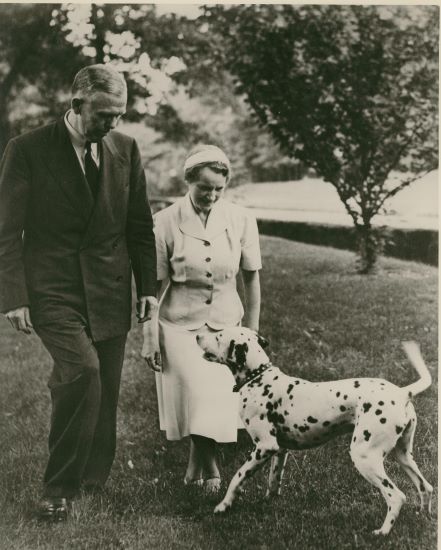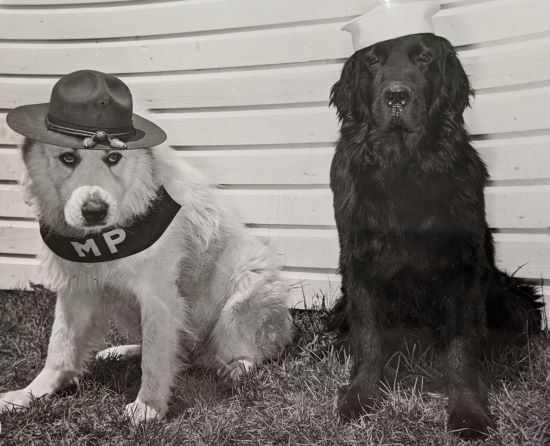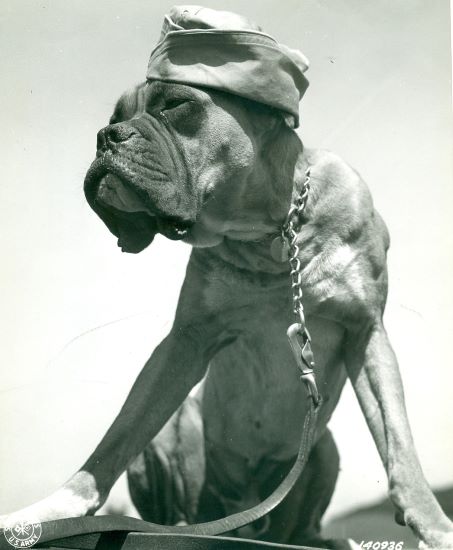Here at the Marshall Foundation Library, we hold a special fondness for canines. General and Mrs. Marshall had many dogs over the years, most notably Fleet, the dalmatian.

Fleet the dalmatian with Gen. and Mrs. Marshall
Fleet was a bit of a runner, once escaping the Marshall’s home in D.C., and ended up getting a ride home from the military police! General Marshall found a great use for all of Fleet’s energy and donated him to the Army’s War Dog Training Center at Fort Royal, VA.
Donating one’s beloved pet for war service wasn’t uncommon during World War II. Through Dogs for Defense, which was established in 1942, 18,000 dogs were given for military service. While some came from military families, most of the animals donated came from civilians looking to help the all-important war effort.
Once donated, the dogs were put through tests to ensure that they were healthy. If any dog failed these tests, they were returned to their owners. The ones who passed were sent to the Army and the Marines for further testing. These dogs were then given to a trainer and started their training.

Brinker, a Great Pyrenees, and Kim, a Newfoundland, were some of the first dogs inducted into the military at the War Dog Training Center in August 1942.
First came basic obedience training: sit, stay, and heel were taught by voice and by hand signals. The dogs were then trained to be silent, since any noise could mean the end of both dog and soldier. Then the dogs were trained to jump, climb, crawl, wade, and swim over and around obstacles.
After this training, a dog would need to become accustomed to military life. This included muzzles, and specially made gas masks, but also jeeps and gunfire. It took many hours to desensitize a dog to the loud, sudden shots. Then came specialized training for each dog, depending on what they would be doing in the war. Scout and sentry dogs were trained to alert their handlers; bomb dogs were taught to sniff out explosives.
Now, the dogs weren’t always on duty. Each dog was given two collars, one for working, one for playing and relaxing. The dogs quickly figured out when they could play with the soldiers, and when it was serious time, based on the collar they wore.

Mike, a boxer, was also in the first class of 100 dogs at the War Dog Training Center in 1942.
The dogs all served in the “WAGS,” but due to the similar sound to “WACs” it was later renamed the K-9 Corps. Dogs that served in the war were either returned to their original owners, if they adjusted back to civilian life or adopted by their handlers if they didn’t adjust well. There is no doubt that dogs are man’s best friend on and off the front lines.
Eryn Davis is a library science graduate student at Clarion University of Pennsylvania, and is working for a while in the Marshall Foundation Library archives accessioning collections. After graduation she hopes to find a permanent job working in library archives.
